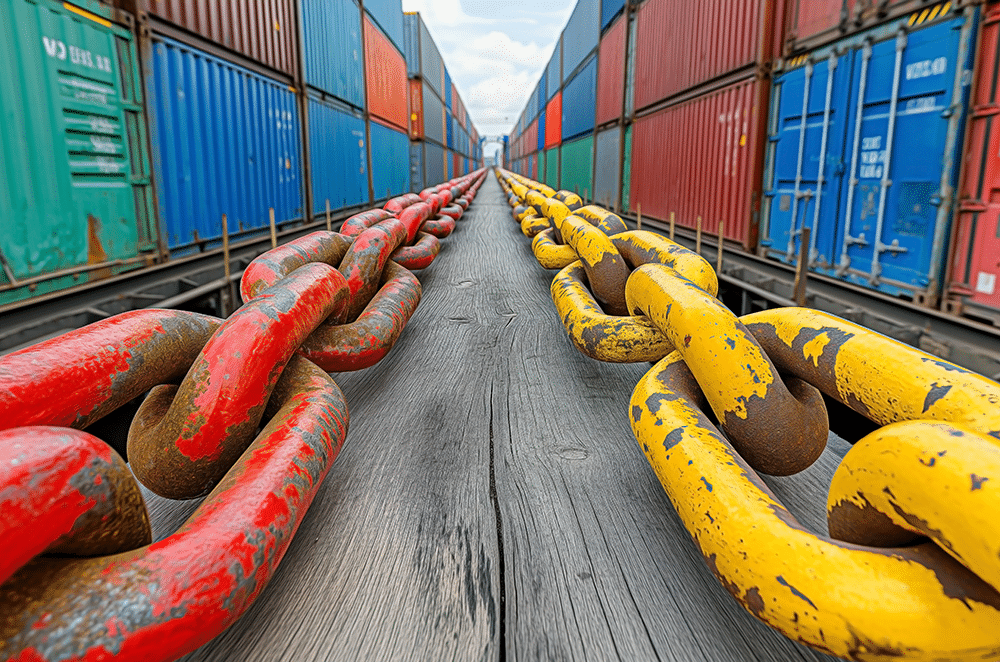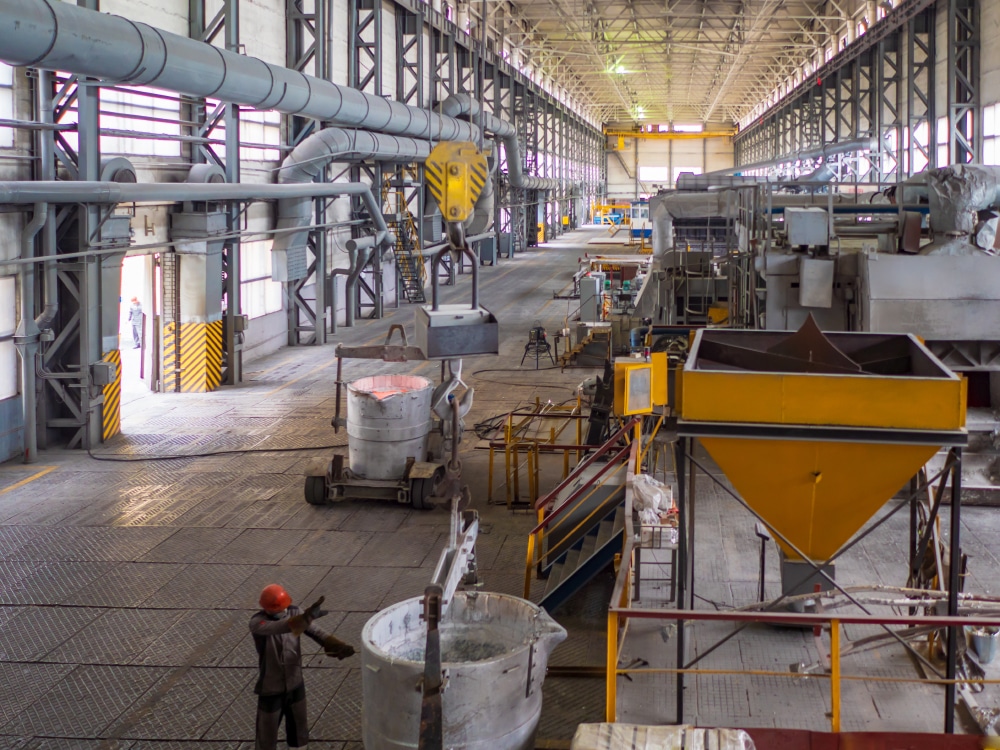Aluminum MMI: How Suppliers Handle Tariffs and What Aluminum Buyers Need to Know

The Aluminum Monthly Metals Index (MMI) remained sideways, as most components appeared consolidated. Overall, the index slid 0.74%, while aluminum prices experienced continued instability.
Aluminum Price Volatility After Tariffs
Aluminum prices have appeared increasingly volatile since the announcement of tariffs. Prices plunged after reaching a mid-March peak, breaking below their sideways range. The implementation of tariffs saw prices lose support due to demand risks. Soon after, the announcement of reciprocal tariffs surprised markets, putting a further drag on aluminum despite the metal’s exemption.
Get expert-driven market insight on aluminum, ensuring your company is well-informed and prepared to tackle the impact from tariffs by opting into MetalMiner’s free weekly newsletter.

While the Trump administration placed reciprocal tariffs on a 90-day pause, markets remain uncertain. However, unlike what happened following the implementation of the 2018 tariffs, the domestic aluminum market appears considerably more resilient. In an exclusive interview with aluminum expert Julie Treska, MetalMiner explores how the market and U.S. supply chain have adapted over the past 7 years and how aluminum suppliers are navigating the most recent trade policy shifts.
Julie Treska is an aluminum procurement and sales expert boasting roughly 15 years of experience in the market. She has worked in domestic and international distribution, spanning multiple sectors, from commercial and industrial to aerospace.
Aluminum Tariffs: 2018 vs. 2025
While the market nonetheless remains volatile, U.S. suppliers have proven better prepared to withstand trade disruptions compared to years past. According to Treska, between 2018 tariffs and pandemic-related supply chain disruptions, both buyers and suppliers have learned to adapt to abrupt changes in the market. This has left conditions far more stable following the most recent tariffs announcements than in years past.
While the 2025 aluminum tariffs are both higher and more expansive than those implemented in 2018, the overall reaction has appeared much more tempered. In 2018, the imposition of the 10% tariff saw the Midwest Premium jump 130% almost overnight. With few warning signs, domestic suppliers panicked, leading to considerable price volatility as they were “caught off guard” by the shift in trade policy.
A Shift in Approach and Reaction
By 2025, markets took new tariff threats far more seriously while also appearing comparatively less reactive. For example, the Midwest Premium began to rise before the administration even announced the official tariffs, breaking into an uptrend around the start of the year. By the time tariffs took effect in mid-March, the jump totaled roughly 84% before it found a peak.
Don’t panic! Learn how to manage tariff threats with MetalMiner’s free comprehensive tariff guide.
Treska noted that aluminum suppliers were far more prepared to weather new trade barriers this time around, having diversified sourcing and learned how to manage volatility strategically. Service centers and distributors rushed into the market but did so at an earlier and more measured pace. Rather than focusing on shortage fears and securing volumes, suppliers appear much more concerned about margins and far more cautious about what they can pass down to buyers.
Aluminum Contract Negotiations Then and Now
In 2018, volatility saw many suppliers pinched by low-priced contracts. This time around, suppliers have largely revamped contracting language to avoid the same fate. Carveouts for tariff adjustments have now become the industry norm, and suppliers have leaned toward more flexible terms due to the many disruptions witnessed over the last decade. Market players also write contracts to accommodate market fluctuations with escalator clauses and far clearer language.

Numerous black swan events added considerable volatility within the market, specifically concerning offshore supply. This has led suppliers to factor in the possibility of unforeseen circumstances, including the most recent tariff announcements, to a degree not seen in years past. Many have also begun favoring longer-term contracts, which allows more room to absorb fluctuating price costs.
Want to know more about what’s impacting your revenue the most as far as aluminum prices go? Become part of the MetalMiner LinkedIn group and stay connected to trends we’re watching and interesting metal facts.
Where Aluminum Demand Stands
In 2018, Treska noted that buyers and suppliers fell into one of two categories: hoard or freeze. To some extent, this remains true today. However, suppliers, in particular, have leaned more towards strategic planning. This has helped mitigate some of the volatility witnessed after the 2018 tariffs. Of the many lessons learned by suppliers from previous years, the most important is that demand still inevitably dictates market conditions.

Currently, demand remains somewhat steady, although suppliers have started to anticipate a dip due to price pressures. Amid upside price pressures, emerging sectors like EVs and solar are most at risk. Beyond that, automotive, construction and canned sheet are also incredibly price-sensitive industries.
At-Risk Industries
It remains true that higher prices pose a significant risk to demand. Automakers already operate on relatively low margins, leaving little room to absorb considerably higher costs. While they remained mostly steady since the pandemic, domestic auto production levels never fully recovered to their pre-pandemic norms. Combined with interest rate pressures, the construction industry also faces significant risks in the coming year.
Some industries are likely to fare better. For instance, Treska believes the aerospace industry will likely offer steady demand, helping counter at least some of the negative weight from other sectors. Long-term planning and demand contracts leave the aerospace industry much better positioned to deal with price fluctuations than more price-sensitive industries.
Do Asian Aluminum Prices Matter After Tariffs?
Chinese aluminum is almost entirely priced out of the U.S. market. Treska noted that distributors saw no reason to even quote Chinese prices prior to the most recent tariffs. That is even more true now.
But tariffs or not, the Asian market still matters for global aluminum prices. As Treska stated, “Shanghai remains a price floor reference, placing practical limits on global price increases.” As the largest producer and consumer of the metal, Chinese aluminum prices set a cap on how high the Midwest Premium can go.

Tariffs do not have unlimited power over pricing, and China will continue to set the global tone. “No market operates in a vacuum, and as long as the Chinese aluminum market remains soft, it will pull the whole global price curve down.” Arbitrage limits kick in quickly, and while the U.S. may have shut Chinese aluminum out of the domestic market, the rest of the world has not. Need a full view of the aluminum market under new tariffs? The Monthly Metals Outlook covers everything you need. Get your free sample copy.
How to Buy Aluminum in Uncertain Times
Treska continued to highlight how much the industry had matured and adapted over the last decade. “While back in 2018 we were blindsided, now we are battle-tested.” For buyers, her advice was multifold:
Communication is Key
Buyer uncertainty leads some to pull back from the market and go silent. However, Treska pushes against this notion. Maintaining contact with suppliers allows buyers to ask ongoing questions and stay informed about the market. Market shifts occur quickly, and ongoing discussions will allow buyers to lock in supply more quickly when necessary. Treska also encourages buyers to ask questions, particularly as suppliers will not necessarily provide that otherwise.
Hedging and Contracting
The only things certain are uncertainty and volatility. Treska notes that the best-positioned buyers in the market utilize hedging when available. Additionally, quarterly forecasts and contract commitments also help buyers remain nimble when demand and/or costs are at high risk of sharp fluctuations. The LME remains the best reference point for aligning ingot pricing.
Diversify
Despite tariffs, the domestic aluminum market will continue to require global supply to meet consumption needs. There are still plenty of competitive buying opportunities internationally, including in South Korea and the UAE. As supply chain threats could still come in any direction, having more than one supply source will mitigate the impact of unforeseen disruptions.
Biggest Moves For Aluminum Prices
- Korean commercial 1050 aluminum sheet prices witnessed the largest increase of the overall index, with a 2.37% rise to $4.17 per kilogram as of April 1.
- The Korean 3003 coil premium over 1050 aluminum coil rose by 2.31% to $4.20 per kilogram.
- Meanwhile, Indian primary cash aluminum prices fell by 2.44% to $2.90 per kilogram.
- LME primary three-month aluminum prices experienced a 3.86% decline to $2,541 per metric ton.
- European commercial 1050 aluminum sheet prices dropped by 13.41% to $3,212 per metric ton.
MetalMiner should-cost models: Give your organization levers to pull for more price transparency, from service centers, producers and part suppliers. Explore the models now.
